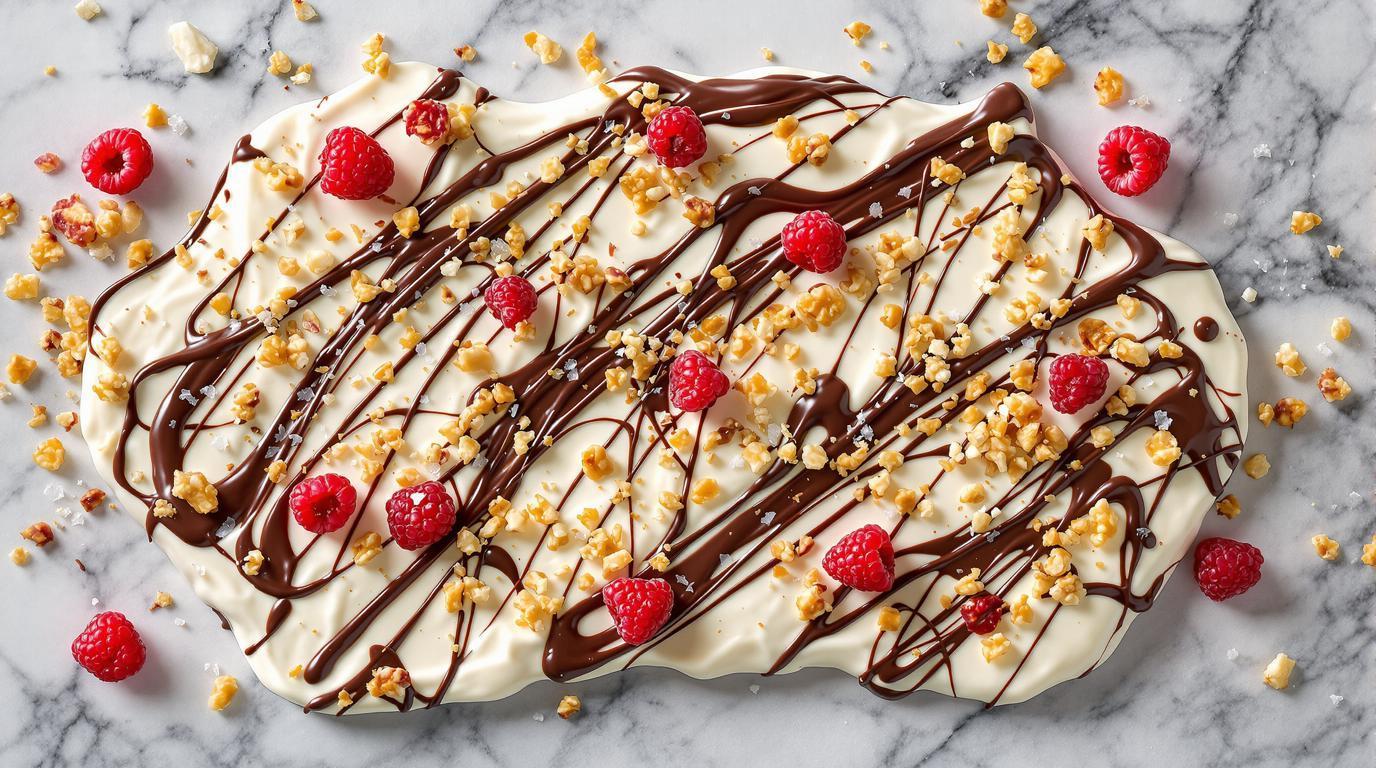There’s something almost magical about transforming humble cottage cheese into a sophisticated frozen treat. During my early years as a sous chef in Vermont, I developed an appreciation for simple ingredients that could be elevated with minimal intervention. This Frozen Cottage Cheese Bark reminds me of those principles—taking something ordinary and creating something extraordinary with just a few thoughtful additions. While not steeped in centuries of tradition, this protein-packed dessert has earned a place in my regular rotation for its clever simplicity and nutritional profile.
The Foundation: Creamy Cottage Cheese Base 🥄
The secret to exceptional frozen cottage cheese bark lies in achieving that perfectly smooth texture. Begin with 2 cups (500g) of cottage cheese—I prefer 4% milkfat for richness, but 2% works beautifully as well. Place it in your food processor with 3 tablespoons (45ml) of honey and 2 tablespoons (30g) of natural peanut butter. A splash of vanilla extract (about ½ teaspoon) adds wonderful depth without overwhelming.
Blend until completely smooth and silken—patience is key here. You’re looking for a texture similar to thick yogurt with no visible curds. This step transforms cottage cheese from its humble, lumpy state into a luxurious base worthy of dessert status.
Chef’s Note: The texture difference between briefly processed and thoroughly processed cottage cheese is night and day. Give your food processor an extra 30 seconds beyond when you think it’s ready—this ensures that perfectly smooth, ice-cream-like consistency when frozen.
Creating Your Bark Canvas 🎨
Line a quarter sheet pan or small baking sheet with parchment paper, allowing some overhang for easy removal later. Pour your cottage cheese mixture onto the prepared sheet and use an offset spatula to spread it to approximately ¼-inch thickness. This specific thickness is crucial—too thin and it becomes brittle, too thick and you’ll lose that satisfying snap.
Now comes the creative part. Before freezing, add your preferred toppings. My go-to combination includes ⅓ cup (60g) dark chocolate chips (melted and drizzled), ¼ cup (30g) chopped walnuts, and a light sprinkle of flaky sea salt. The contrast between the sweet, creamy base and the crunchy, slightly bitter toppings creates a complex flavor profile that belies the dessert’s simplicity.
For a fruit-forward variation inspired by my Grandma’s Grilled Peach Dessert, scatter fresh berries across the surface and add a light dusting of cinnamon.
The Freezing Process 🧊
Transfer your prepared bark to the freezer and allow it to solidify for 2-3 hours minimum. The patience required here will be rewarded—proper freezing ensures the perfect texture. Once completely firm, remove from the freezer and let stand for exactly 5 minutes at room temperature. This brief tempering period makes breaking the bark into pieces much easier and enhances the eating experience.
Using the parchment overhang, lift the entire sheet of bark onto a cutting board. With clean hands or the back of a knife, break the bark into rustic, irregular pieces—this haphazard approach is part of the charm and gives each serving character.
Serving Suggestions & Complementary Pairings 🍽️
This protein-rich dessert (approximately 15g protein per serving) stands beautifully on its own, but truly shines alongside complementary flavors. Consider serving with a small bowl of overnight chia pudding for textural contrast, or alongside a Mediterranean-inspired watermelon and halloumi salad for a refreshing summer dessert course.
For a more substantial dessert platter, pair with baked feta with honey and nuts—the warm, savory notes create a beautiful contrast with the cool sweetness of the bark.
Chef’s Note: Store any leftover bark in an airtight container with parchment between layers to prevent sticking. It keeps beautifully for up to 2 weeks, making it an excellent make-ahead dessert option for busy households.
Cultural Context & Modern Adaptations 🌍
While this frozen cottage cheese bark doesn’t have the historical lineage of something like traditional Moroccan couscous, it represents the best of modern culinary innovation—taking influence from frozen yogurt bars, protein-conscious eating, and no-bake desserts. The combination creates something greater than the sum of its parts.
This humble dessert reminds me that sometimes the most satisfying kitchen creations aren’t about complex techniques or rare ingredients, but rather about thoughtful combinations of everyday staples. In your own kitchen, I encourage you to see this recipe as a starting point—experiment with different toppings, spices, and flavor combinations to make it uniquely yours.
